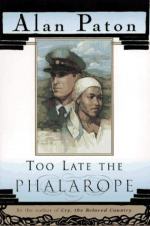|
This section contains 335 words (approx. 1 page at 400 words per page) |

|
1920s: Among the laws governing social behavior in South Africa is the Immorality Act of 1927, forbidding sexual relations between blacks and whites. While originally designed to protect helpless servant women from being exploited by powerful bosses, the law eventually comes to represent the pursuit of racial purity by European settlers. The punishments for violating this Act are severe, and the social consequences are staggering.
Today: In 1991, 74 percent of Americans say they view interracial marriage as acceptable. In 1994, the number of black-white interracial marriages in America has risen to 1.2 million, compared to only 651,000 in 1980.
1920s: Education for native South Africans is lacking, and illiteracy is the norm. In a culture with a strong oral tradition, little emphasis is placed on learning to read, despite efforts by missionaries. This is reflected in Too Late the Phalarope, in which the black children marvel at Pieter's ability to...
|
This section contains 335 words (approx. 1 page at 400 words per page) |

|




